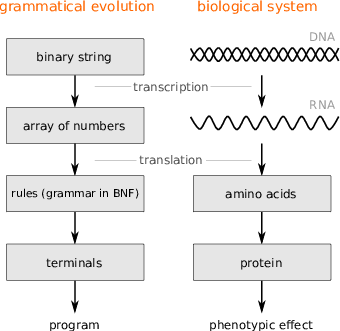

elitism: select N most fit individuals and copy them to next generation
roulette-wheel: probability of survival into next generation is proportional to indvididual's fitness
tournament...

for numeric genes: additive mutation, multiplicative mutation, complex (imaginary) mutation
for symbolic ones: removal, addition or replacement of a symbol; metathesis (e.g. MORF -> FORM)
NOTE: Mutation rates often fall in the range of 0.5% to 1% per gene. This rate is low enough to prevent excessive random search (which can disrupt good solutions) and high enough to introduce diversity and enable the algorithm to explore new areas of the solution space.


